This week as we start our series exploring projects and ideas related to sustainability, conservation and renewable energy that have big potential. Do you like to eat? Do you like fresh great tasting food and want to easily find it in your local community? Then you will have an appetite for this week’s interview.
What started as a group of strangers who came together to save local farm land, evolved into a new community of farming and local food enthusiasts. From this group, the idea for a collective local food and farming network in San Diego County began to grow, resulting in The San Diego Roots Sustainable Food Project. For nearly 15 years, the project has provided a range of classes for all ages, volunteer opportunities and social events to residents across the county. With a recently renewed lease on their Tijuana River Valley Regional Park farm, the project is looking forward to the expanding their work and mission in the next year.

Credit: San Diego Roots Sustainable Food Project
We welcome Mel Lions, Director of San Diego Roots Sustainable Food Project. He shares the history of the project, its current efforts and what we can continue to look forward to from the project (in addition to tasty, fresh, locally grown food). We welcome his insights.
– – –
How did the idea for San Diego Roots Sustainable Food Project originate?
In December 2000, a local farmer called a group of his friends together to inform us that the land he’d been renting was going on the market, that a developer was interested in turning the rich farmland into a gated polo field surrounded by mansions. Instead, our friend proposed that the community buy the land to preserve it as farmland. The farmer was using about four acres out of 160, most of which was growing hay. The land had ample well water, had only ever been farmed, and enjoyed deep, rich soil. We didn’t know each other but we knew him and the delicious food he was able to grow, and decided this was a worthwhile effort.
We were enthusiastic and idealistic, but had no formal organization, no business plan, and mostly no idea that we had little chance of raising $8 million in a short amount of time. But because we were clueless, we tried. We developed a concept to take the 160 acres and install a variety of agricultural ventures — including row and field crops, dairy and eggs, grains and pasture — to unite the various operations into a cooperative venture, and use the entire operation as a place to train the next generation of farmers.
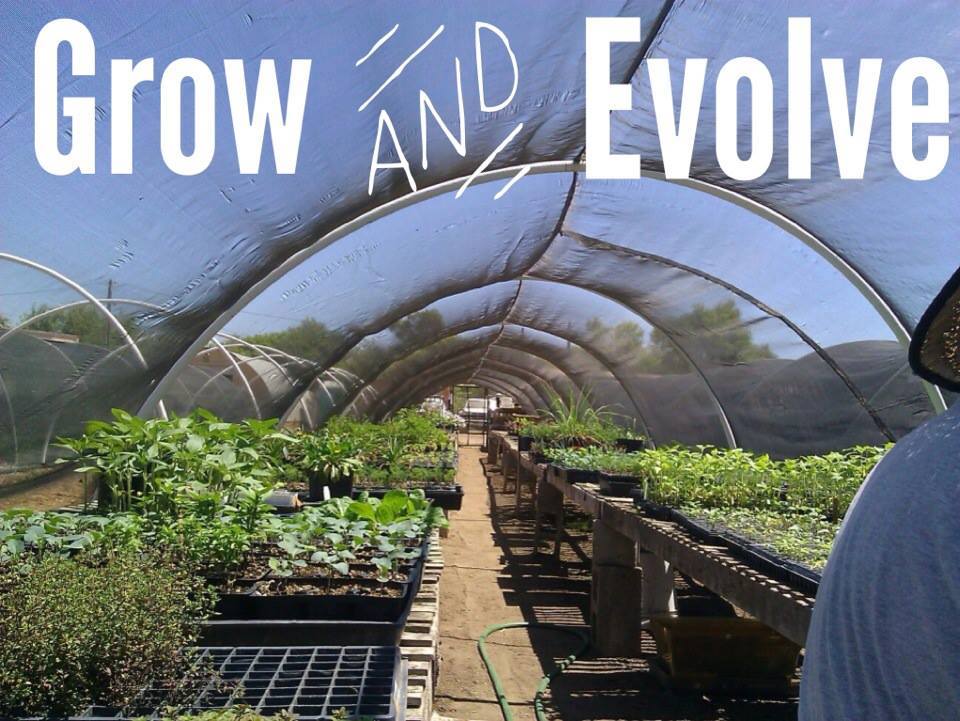
Credit: San Diego Roots Sustainable Food Project
As we went around the community urging people to “buy the farm!” the most common response we got was, “Why? Why should I give you money from my pocket to do that?” While the local food movement was awakening in other cities around the country, we discovered that it did not exist in San Diego in the year 2001, and we ultimately failed to buy the land.
But over those two years of effort we had grown to like each other. We found we worked well together, that the cause was worthy, and decided that we were the ones to instigate the local-food movement for San Diego. We reorganized as an educational group, going all over town showing free movies about food and then leading discussions, setting up tables at local events, talking to many thousands of people about the importance of local farms to our community’s health, economy and environment. We grew our membership and expanded our outreach, and then gave ourselves a name that encapsulated our work: San Diego Roots Sustainable Food Project. We were now a thing.
Our theme this month is projects and ideas that may be on a smaller scale but have the potential to have a big impact. What is the big idea your project is promoting?
We want to see food growing where we live: in our yards, our places of worship, our schools, and in the fertile fields surrounding our cities. Before the onset of the globalized food system in the 1990s, for ten millennia most food was grown in or near a city or town. Food grown where we live needs far less petroleum inputs to get to market, is picked for flavor and nutrition instead of for how it holds up to transportation, is better tasting and more nutritious, and supports the local economy rather than some mega-agribusiness that doesn’t live here.
Food is one of our primary connections to the environment; how we choose to eat food has a huge effect on the soil, water and atmosphere. Industrial food production is one of the most environmentally destructive industries. So we teach people how to grow food right here — from the small, backyard scale to small-scale farming — and empower them to take back control of their food from global agribusiness, to enjoy eating the most delicious and nutritious food around, and to marvel at the wonders of soil and nature and our relationship to all that lives. This would take us back to the way we once grew food and would have a tremendous effect on the environment. And our food would taste better too!
What are some of the ways your project works to encourage the growth and consumption of regional food?
We have two primary programs: Victory Gardens San Diego, where we teach people how to grow food in their yards, schools, and community spaces; and Wild Willow Farm & Education Center where we teach small-scale farming and serve as a community hub for local foodies. At Wild Willow Farm, we offer classes for adults on the fundamentals of growing food, and workshops on many topics from beekeeping to food preservation. We offer field trips to students of all ages, where we give hands-on lessons on topics ranging from the earthworm life cycle, how to make a school garden, cooking (and eating!) demonstrations, and tie agricultural ideas into science, math, and art.
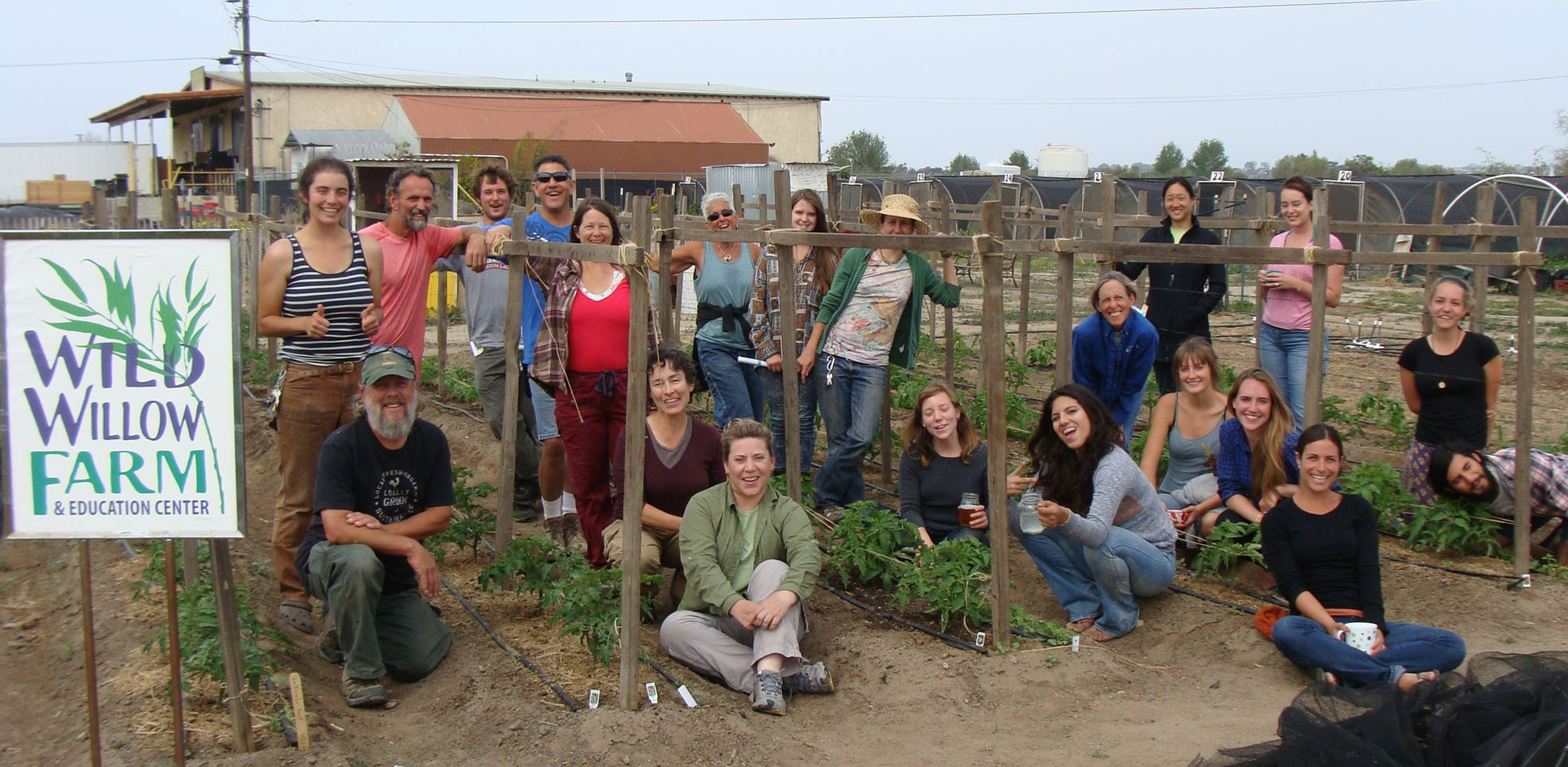
Credit: San Diego Roots Sustainable Food Project
Our website serves as a resource for people who are looking to support local food, offering lists of local farmers markets, small-farm CSAs, restaurants that feature local food, community groups with a food focus, and generally helping people who are looking to make a locally based change in their eating lifestyle.
San Diego Roots Sustainable Food Project started 14 years ago. What have been some of the biggest challenges and successes you have had to date?
Needing to raise $8 million in a couple years was a challenge, that’s for sure! But that failure only clarified the need and steeled our determination to be a force for change. Certainly gathering a group of people durable enough and determined to take this work on has been a challenge, but by keeping the purpose front and center, by being persistent and not giving up, and working hard to say “yes” as much as possible, opportunities opened up and we’ve found a solid team committed to make it work. After ten years as a volunteer group, people now have meaningful jobs with us.
Other primary hurdles have been bureaucratic: figuring out and meeting all the legal and regulatory requirements that have presented themselves. This has included forming a corporation, getting non-profit status, facing the myriad rules of small business, employment law, farming regulations, and leasing land. Dealing with these remains a full-time, non-agricultural job.
Our successes can be witnessed in the community of people who gather with us to grow food and collectively build the world we want to live in. Where there was once a handful of strangers, now there are hundreds — thousands — of people who have been affected by our message and efforts.
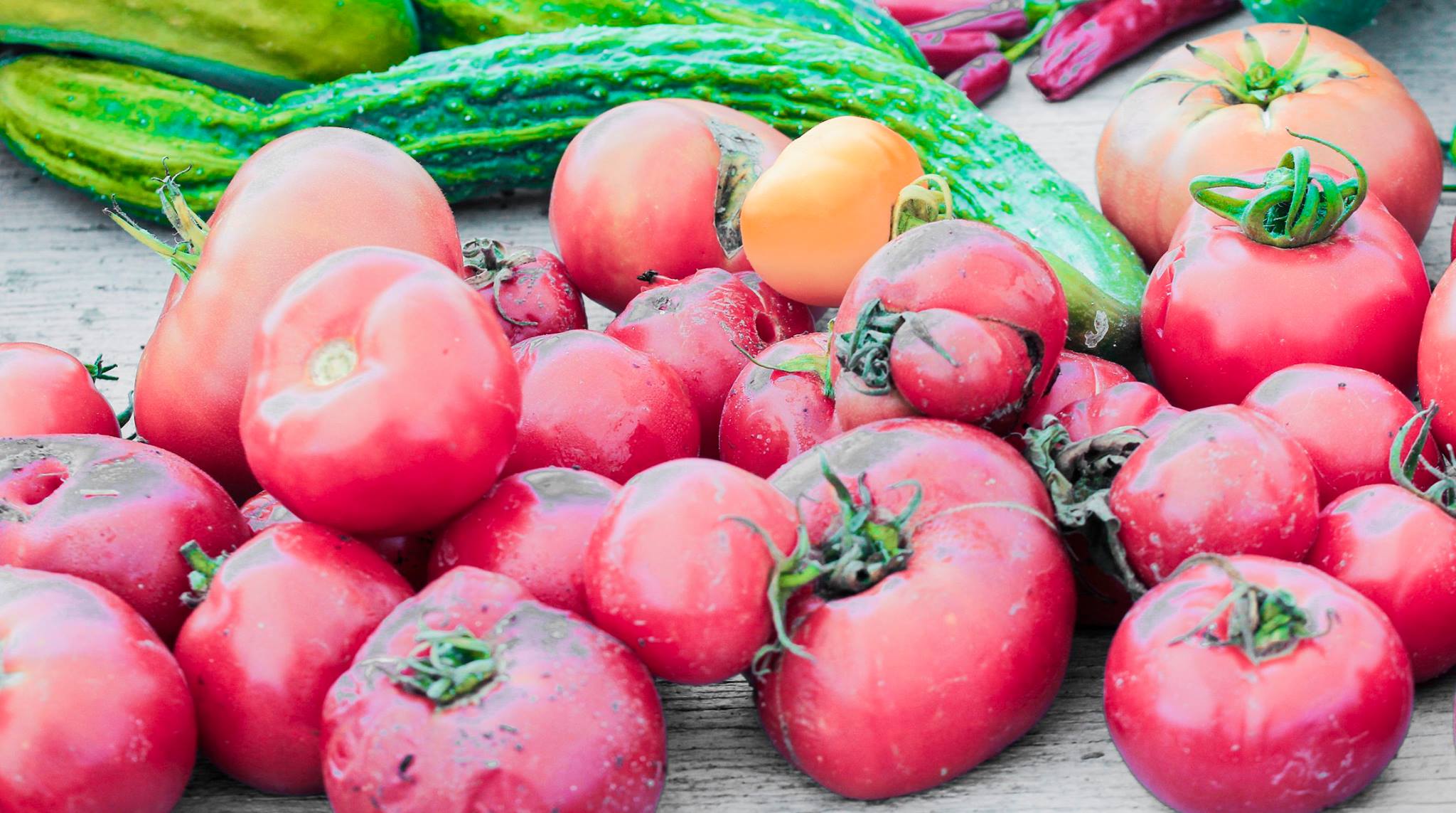
Credit: Roman-Photography/San Diego Roots Sustainable Food Project
How does our community benefit when we buy and eat locally grown food?
Nature has a wondrous way of providing peak nutrition at the moment of peak flavor. Our food is more enjoyable and nutritious when we eat something picked for flavor rather than for profit. When we buy produce at a farmers market where there is no middle-man, the farmer gets a bigger piece of the pie and is more likely to spend that money back in the local economy, where it circulates (like blood!) and supports other local businesses; whereas most of the money spent at a supermarket supports an industrial food chain of which the farmer gets the littlest and last share. Plus farmers markets are vibrant community hubs where you can interact with your neighbors in unexpected ways and help bring the community alive.
Growing food in your front yard gives you instant connection to the people in your neighborhood, who will stop and engage with you, ask questions, give advice. I guarantee you can grow enough food to give away to your neighbors, strengthening your connection with those who live around you.
In the history of humanity, in every culture in the world, we’ve always celebrated our culture milestones with food. Every time we gather for any occasion, whether religious or secular, for births, rights of passage, marriage or death, there is food. Isn’t it a validation of the importance of our culture when we prepare and share the best of what we have, rather than what is the cheapest and most convenient?
San Diego Roots Sustainable Food Project just signed a lease with the County of San Diego Department of Parks and Recreation to continue to farm and teach in the Tijuana River Valley Regional Park for the next five years. This area is home to your project’s Wild Willow Farm and Education Center. Can you tell our readers more about what happens at Wild Willow Farm?
There are three cornerstones in Wild Willow Farm’s structure: Agriculture, Education and Community. Each of these interact to create a vibrant and growing network of citizens who are activated to create a more vital and connected food network for our region.
During the week at Wild Willow Farm, we have farm-school students learning basic farming skills from our talented teaching staff. Every Saturday we host farm-school classes, open volunteering, and community events. Once a month from March through October, we host a free open house/potluck, with farm and nature tours, yoga, local musicians, specialty classes, and of course food, including delicious farm-fresh pizza on sourdough crust cooked in our wood-fired oven. As the sun goes down we light a fire in our cob bonfire ring and invite everyone to pound a drum and dance, and celebrate the connections offered by our community.
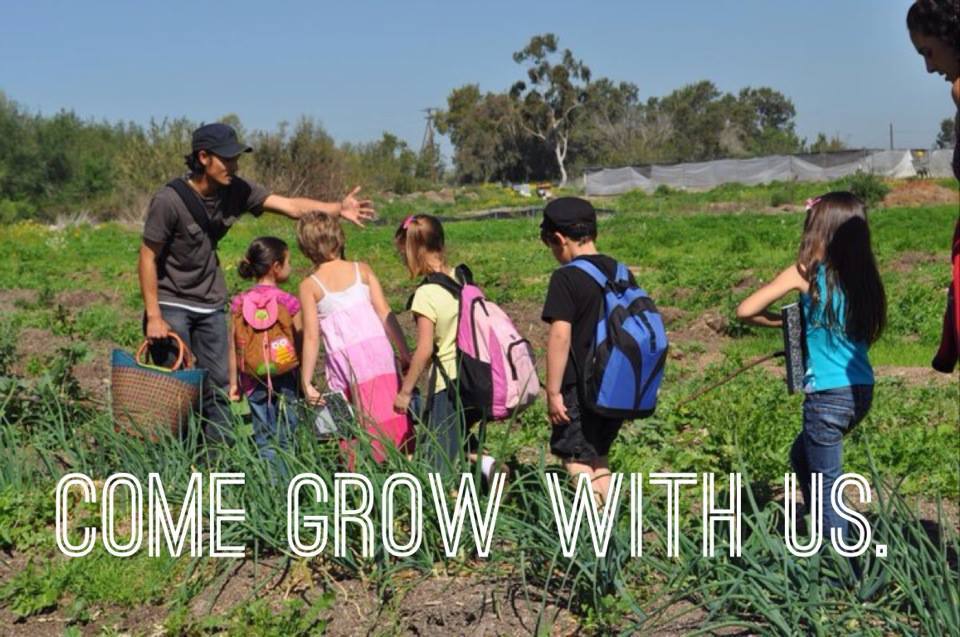
Credit: San Diego Roots Sustainable Food Project
What types of educational classes and events does your organization offer?
Most of our work centers on education and community building. Toward those ends we offer home-gardening courses through our Victory Gardens San Diego program. These are usually three weekend classes at people’s homes. It’s a hands-on approach that takes novices through every vital stage in growing food, with the homeowner getting a garden built in their yard.
At Wild Willow Farm & Education Center, we offer year-round courses in small-scale sustainable farming, teaching at levels from basic to advanced in our School for Sustainable Farming. Every Saturday we invite the public to volunteer on the farm and get hands-on experience while enjoying fresh air and good food, all while connecting with interesting and engaging people.
At the farm we offer periodic classes in subjects ranging from beekeeping to fruit-tree care, fermentation to medicinal herbs. We host social events and monthly community gatherings to celebrate and network with people who understand the importance that good food has in creating an enjoyable, delicious and meaningful life.
How does your project engage and inform the public about its efforts? What tools and methods do you use?
Our primary outreach is via our website, social media and our periodic newsletter. Because we’ve been around for a while, we’ve got friends and partners all over San Diego, and this network offers us a broad reach into our market. Now that we’ve established our farm and gotten a new lease, we expect to do further outreach to local print and broadcast media as well.
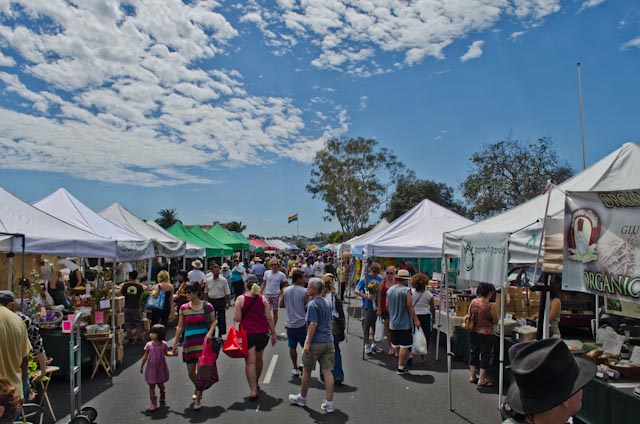
The Farmers Market in the Little Italy Community of San Diego, CA.
(Credit: georgevutetakis.com)
Your organization helps people find locally grown food in San Diego County. Your website provides a list of restaurants, organic markets, farmers markets, farm stands, wholesale distributors, etc. Is not being able to find locally grown food a common complaint you hear? Why do you think it difficult for people to find locally grown food?
It used to be, but not so much any more! But every day there are folks just entering the local food scene, and by listing resources we give them a hand up. Also, more restaurants are offering locally sourced ingredients and we want to encourage them by giving them free promotion for taking that leap. The more restaurants and markets that serve or sell locally grown food, the more people are exposed to the local food concept.
There are some structural issues that would make access to local food easier, such as reinstitution of a local food hub where local farmers could aggregate their products so more restaurants and markets could source locally grown produce. A couple decades ago, downtown San Diego had a number of produce wholesalers who purchased food from local farmers, but this system was abandoned and replaced by larger, Los Angeles-based food distribution centers. So now, even food that is grown in San Diego and consumed here has probably been to Los Angeles and back!
This movement is all about connections. Helping get people connected to where their food comes from remains one of our primary purposes.
What’s next for San Diego Roots Sustainable Food Project? What should people look forward to on the horizon?
We intend to keep expanding our work: offering more classes, connecting to more school kids, expanding our farm, adding depth to our efforts. The difference between gardening and farming is that farming is a business, so in 2015 we’ll be offering advanced farming courses in the Business of Farming, teaching classes in production planning, regulatory and certification requirements for small farmers, employment issues, and other non-horticultural necessities of farming.
We’re working to do more outreach to local schools, helping mentor school gardens and nutrition programs, and offering after-school programs at the farm to give students a healthy, outdoor activity to meet their service-learning requirements.
Because Wild Willow Farm is in a park where we’re not allowed live, longer range we’d like to get land of our own where we can live and grow our farm school — the only one in Southern California, and one of the few in the country that offer year-round growing — and offer staff and student residency and community-building programs. This is perhaps a refined echo of our original effort that failed.
How can San Diegans get involved in the San Diego Roots Sustainable Food Project? Are there other projects or networks like yours nationally that you can share with our readers in other parts of the country?
We invite everyone to come to the farm every Saturday and volunteer and get their hands dirty. We host events throughout the year, so keep checking our website or sign up for our newsletter to stay informed about what we’re doing. During the warm months (March – October), we host a free community open house/potluck where you can enjoy a unique experience and meet a lot of people involved in this movement.
While we are an entirely local organization, there are organizations and efforts springing up all over the country — too many to name — so the best bet would be to meet people at your local farmers market or search the web for sustainable food in your area. “Foodies” by nature are gregarious and interesting, and I promise that by connecting to your local food network, you will be enjoying the most fabulous and delicious food!
– – –
We hope this interview left you hungry for more. Click here to learn more about the San Diego Roots Sustainable Food Project and to find locally grown food across San Diego County.

Recent Comments